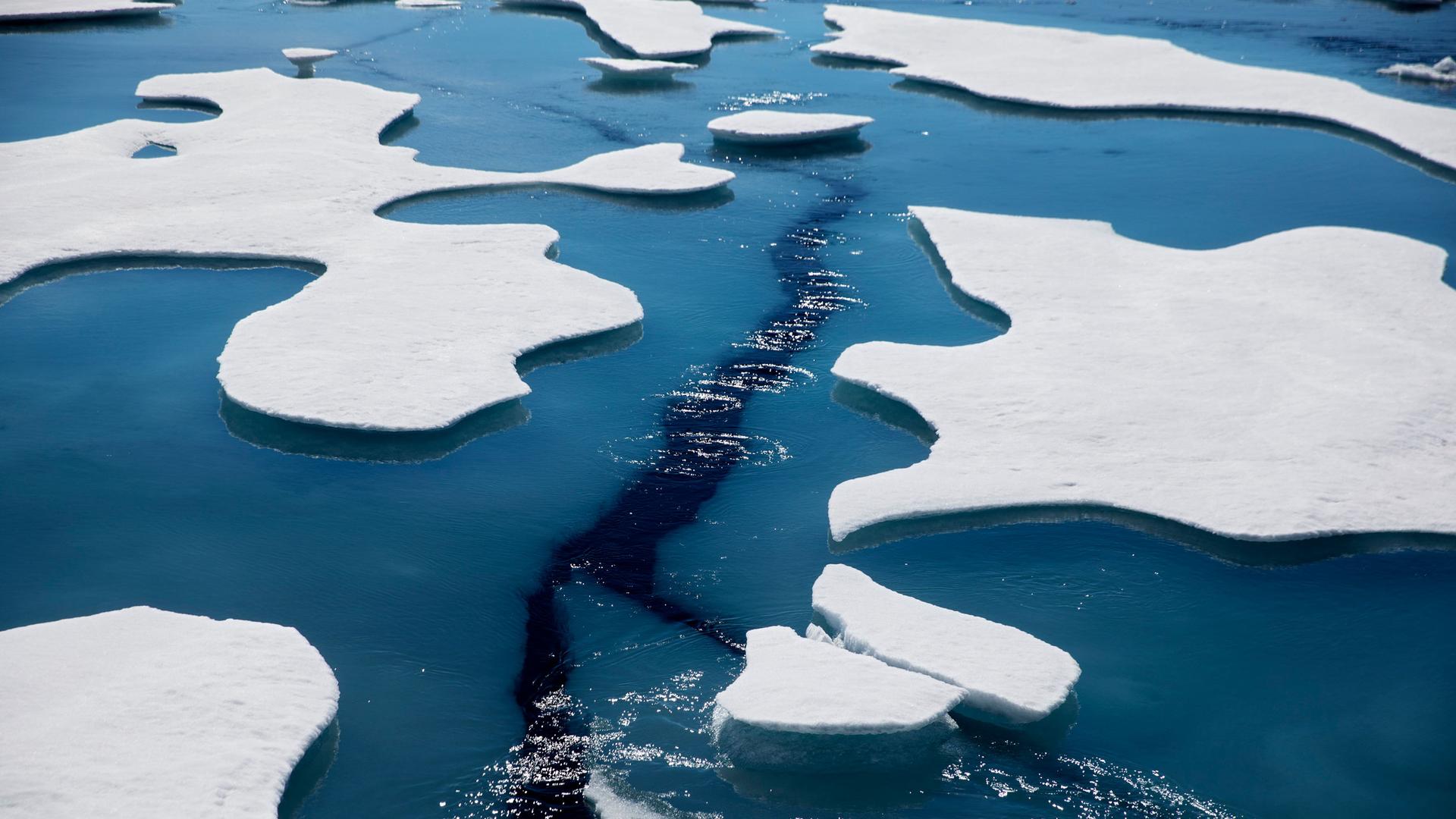Sea ice plays a crucial role in cooling the planet. It’s melting at record-breaking rates.
This reporting was supported by the Pulitzer Center on Crisis Reporting.
In the city of Tromsø, Norway, a massive building houses the Norwegian Polar Institute. Sebastian Gerland, a sea ice and climate scientist there, made headlines this month as co-author of a dire UN climate report, described as a “code red” for humanity.
Related: 5 things to know about the new UN report on climate change
According to his findings, the last decade’s average Arctic sea-ice levels hit their lowest in 1,000 years. And last month, sea ice reached its lowest point ever recorded in July.
Related: Rapid ice melt and sea level rise will be part of our global future
Gerland said that over the years, the ice is getting “younger.”
That means more of the Arctic sea ice is melting away completely each summer. That’s worrisome, because sea ice plays a crucial role in cooling down the planet.
“If there is no ice, there is more warming of the surface.”
“It reflects a lot of the solar radiation coming in,” Gerland said. “If there is no ice, there is more warming of the surface.”
Typically, sea ice works as the “earth’s refrigerator”: warm water circulating up from the equator cools down underneath sea-ice cover. But when it’s exposed, that water stays warm — and heats up the atmosphere, too.
Related: Athens becomes the first in Europe to appoint a chief heat officer
In recent years, while out on an expedition, Gerland said he could actually see the heat escaping through cracks in the ice.
“We see this looking like smoke coming up, basically, because the ocean water is warmer than the atmosphere,” he said.
But most changes in the ice aren’t so obvious to the naked eye. So, Gerland and his team drill out ice cores and bring them back to the lab. They’re kept in a sub-zero freezer vault deep underground in stacks of styrofoam boxes. The drill they use to extract the ice cores is about 3.3 feet long. Gerland said that shorter cores are becoming more common as the ice thins.
Back in the relative warmth of his lab, Gerland explained to The World why he went to the trouble of drilling these samples. When he slices into these ice cores and looks at them under a microscope, he can read the story of a changing Arctic.
“Once the ice starts to melt, it becomes porous,” he said. “We can see those porous holes a bit like Swiss cheese.”
Gerland’s research finds that “Swiss cheese ice” means it can melt faster, warming up the ocean and atmosphere — ultimately changing weather conditions.
“If you have a large area that is not ice-covered, but used to be ice-covered, that’s making a change also to the processes that generate the different weathers,” he said.
Related: Can naming heat waves raise awareness of the risks?
Trond Arild, an Indigenous Sámi who fishes on the Barents Sea, said that he’s never seen such bad sea conditions in his 50 years of fishing. This summer, for the first time, heavy storms kept him off the sea for an entire month. And he said it’s not just this year, either.
“For the last 10, five years, it’s been changing slowly, slowly,” he said. “The last three or four years, it’s been getting [worse].”
Gerland and his colleagues are learning more about the ripple effects of sea ice melting. Right now, they’re studying how it impacts salinity and ice flow.
But Arild, who comes from a long line of salmon fishers, is less hopeful. He fears that salmon fishing may end with him.
“I think I’m the fourth generation, and probably the last. … I don’t see much hope in the future.”
“I think I’m the fourth generation, and probably the last,” Arild said. “I don’t see much hope in the future.”
Our coverage reaches millions each week, but only a small fraction of listeners contribute to sustain our program. We still need 224 more people to donate $100 or $10/monthly to unlock our $67,000 match. Will you help us get there today?
